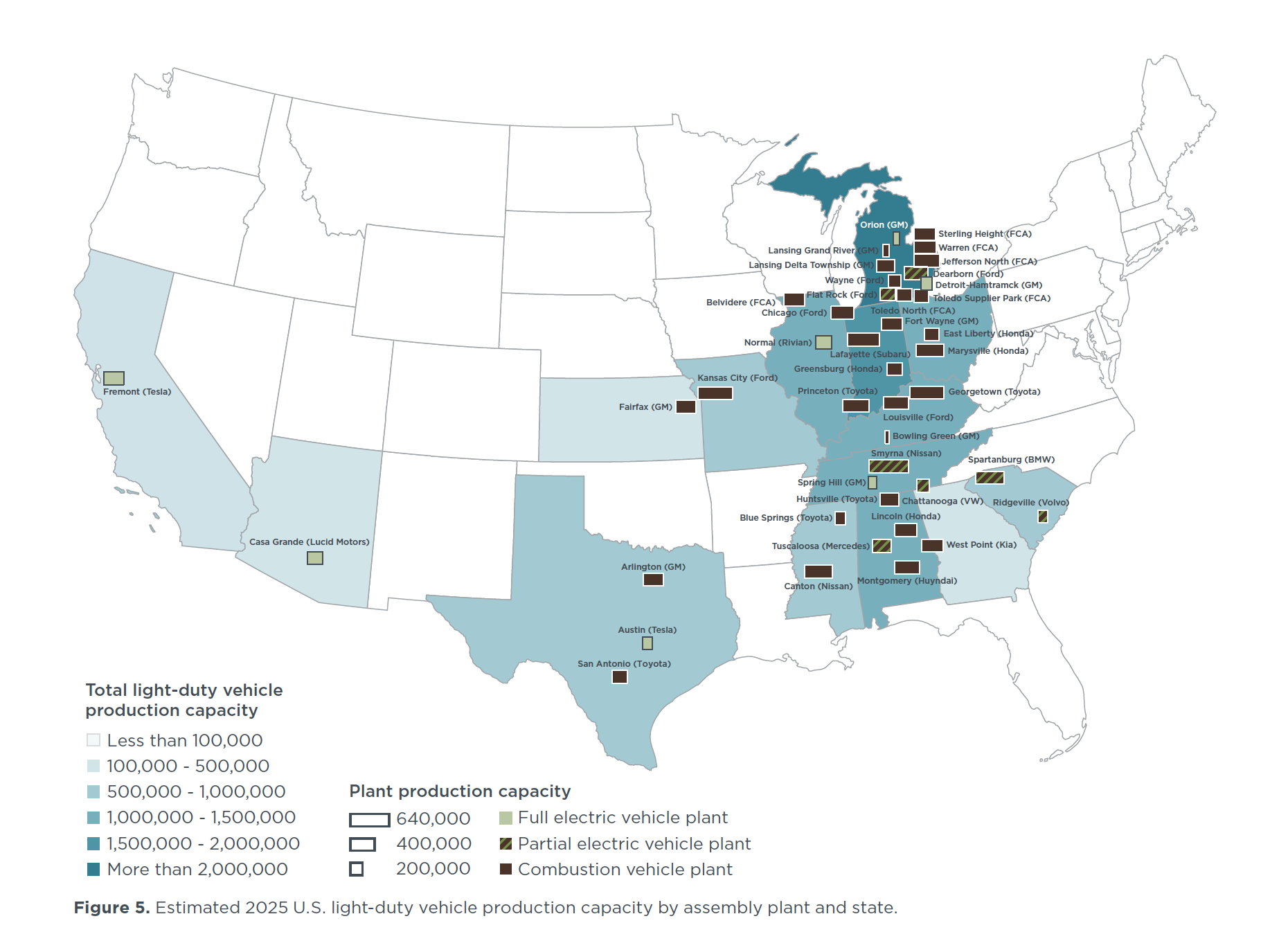Briefing
Power play: Evaluating the U.S. position in the global electric vehicle transition
The United States is the third largest electric vehicle manufacturer, behind China and Europe. From 2017 to 2020, the U.S. share of cumulative global electric vehicle production since 2010 decreased from 20% to 18%, while manufacturing increased in the other two regions.
The electric vehicle production dynamics reflect where there has been the most electric vehicle market growth and where policies are encouraging the transition to electric vehicles. About 15% of the approximately $340 billion in global automaker electric vehicle investments appear to be destined for the United States. Based on the company announcements through 2020, about 5% of this global total is actively being invested in specific U.S. assembly plants to increase electric vehicle production. Similarly, of the automakers’ announcements that sum to 22 million annual electric vehicle sales by 2025, about 2.3 million (or about 10%) are slated to be manufactured in the United States.
Seven of the 44 major U.S. assembly plants, representing about 16% of U.S. vehicle production and capacity, will manufacture only electric vehicles in 2025. The U.S. electric plants include three owned by General Motors, two by Tesla, and one each by emerging electric vehicle companies Rivian and Lucid Motors. Five automakers (Ford, Fiat Chrysler, Toyota, Honda, and Nissan) that each produce about 900,000 to 1.5 million vehicles annually have not announced plans for electric vehicle-only assembly plants. However, many automakers have developed limited capacity for some electric vehicle production (typically less than 15% of a plant’s production capacity as of 2020) and are making additional investments to partially convert or expand their electric vehicle capacity.
Based on this assessment, more investigation is needed to identify and recommend targeted electric vehicle policy actions to bolster the U.S. auto industry. With 44 major manufacturing plants and production volume of more than 10 million light-duty vehicles, the United States has both a risk of continuing to lag developments in China and Europe and also an opportunity to increase its share of global electric vehicle production.

